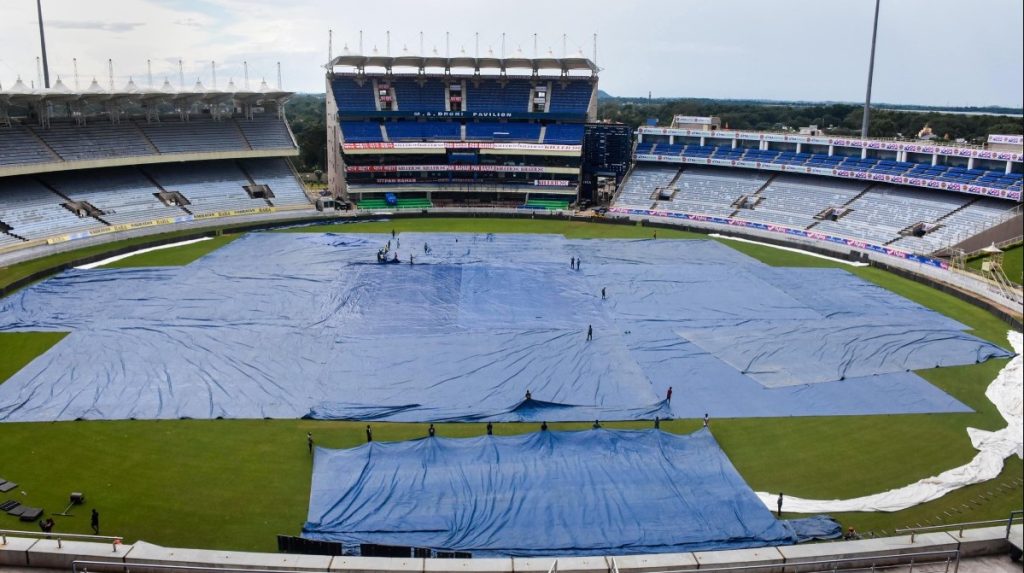The JSCA International Stadium Complex in Ranchi is one of India’s modern cricketing jewels. While many cricket fans often focus on the history and performances of players, a crucial factor that greatly influences the dynamics of the game is the boundary length of the ground. This aspect of a stadium may seem minor at first glance, but it plays a significant role in determining how matches unfold, especially in shorter formats like T20s. In this article, we will explore the boundary dimensions of Ranchi Cricket Stadium, compare them with other renowned international stadiums, and assess how these dimensions impact the game.
1. Introduction to Ranchi Cricket Stadium
Located in Ranchi, Jharkhand, the JSCA International Stadium Complex has been a key venue for domestic and international cricket since its inauguration in 2013. It is a state-of-the-art facility that has hosted numerous One-Day Internationals (ODIs), T20s, and Test matches, making it a prominent cricketing hub in India. The stadium has witnessed thrilling contests, with the Indian national team regularly playing here, as well as the growing importance of the stadium in the Indian Premier League (IPL).
The field dimensions of a cricket ground can vary significantly from one venue to another. The boundary length is a particularly important aspect, as it directly affects how quickly runs are scored and the type of strategies employed by the teams. A shorter boundary may favor the batsmen, while a larger one often gives the bowlers an edge. Let’s look into the boundary dimensions at the Ranchi Cricket Stadium to understand how these play a role in match strategies.
2. Boundary Length of Ranchi Cricket Stadium
The JSCA International Stadium Complex, which is the official name of Ranchi’s cricket stadium, has relatively balanced dimensions compared to some other major international venues. This balance allows both bowlers and batsmen to have their moments, making matches at this stadium exciting and competitive. The typical boundary lengths at the stadium are as follows:
| Side of the Ground | Length (Meters) |
|---|---|
| Straight Boundaries | 70 – 74 meters |
| Square Boundaries | 68 – 70 meters |
| Powerplay Zone | 60 – 65 meters |
Explanation of the Table:
- Straight Boundaries: The straight boundaries at Ranchi are relatively long, ranging between 70 to 74 meters. This means that players need to hit the ball with power and accuracy to clear the boundary on the straight side.
- Square Boundaries: The square boundaries, which include the leg side and off-side, are slightly shorter, ranging between 68 to 70 meters. These dimensions give batters more opportunities to cut, pull, and drive the ball for boundaries.
- Powerplay Zone: During the first six overs in a T20 match, known as the powerplay, the boundaries are shorter, ranging between 60 to 65 meters. This zone allows aggressive batting strategies, encouraging teams to capitalize on the fielding restrictions and score big runs early on.
3. How Do These Boundary Lengths Compare to Other Cricket Grounds?
To understand how the boundary lengths at Ranchi Cricket Stadium measure up, let’s compare them with a few iconic cricket grounds around the world. Each ground has its unique dimensions, and these influence how matches are played, especially in limited-overs cricket.
| Stadium | Straight Boundaries (Meters) | Square Boundaries (Meters) | Notes |
|---|---|---|---|
| Ranchi Cricket Stadium | 70 – 74 | 68 – 70 | Balanced dimensions favoring both bat and ball. |
| Eden Gardens, Kolkata | 70 – 75 | 65 – 70 | Larger boundaries, challenging for big hitters. |
| Wankhede Stadium, Mumbai | 65 – 70 | 60 – 65 | Shorter boundaries, conducive to high-scoring games. |
| Melbourne Cricket Ground (MCG) | 70 – 74 | 65 – 70 | Larger boundaries, favoring bowlers and fielders. |
| Lord’s Cricket Ground, London | 71 – 73 | 65 – 70 | Classic ground with a more traditional feel. |
Analysis of the Table:
- Ranchi vs. Other Grounds: The Ranchi Cricket Stadium features moderately long straight boundaries compared to many international venues. These dimensions strike a balance between favoring aggressive batsmen and providing opportunities for the bowlers.
- Ranchi’s Square Boundaries: Ranchi’s square boundaries are slightly shorter than those at Eden Gardens but more consistent with other grounds like Wankhede Stadium. These dimensions are particularly suited for players who prefer square drives, pulls, and cuts.
- Powerplay Zone: The shorter powerplay zone at Ranchi (60-65 meters) is comparable to other venues, creating a dynamic period where batsmen can capitalize on fielding restrictions.
4. The Impact of Boundary Lengths on the Game
A. Batting Advantages
The boundary length at Ranchi Cricket Stadium favors aggressive batting strategies, especially in the shorter formats like T20 cricket. The relatively short square boundaries (68-70 meters) allow batters to play a wide array of shots, including cuts, pulls, and drives. These dimensions often lead to higher boundary counts and quicker scoring rates.
- Power Hitters: Players known for their power-hitting abilities, such as those in the IPL, find Ranchi’s boundaries welcoming. With the shorter square boundaries, players can clear the ropes more easily, making it an ideal venue for explosive performances.
- Strategic Shot Selection: The balance of boundary lengths means that batsmen can use different types of shots to accumulate runs. Square boundaries encourage quick boundaries, while straight shots challenge batsmen to play with precision and power.
B. Bowling Challenges
On the flip side, bowlers find it more difficult to maintain control over the game when the boundaries are relatively short. At Ranchi, the straight boundaries of 70-74 meters and the shorter square boundaries increase the chances of hitting boundaries, especially during powerplay overs when field restrictions apply.
- Bowling Strategies: Bowlers are forced to adapt their strategies to counter the shorter boundaries. For example, they may bowl yorkers, slower deliveries, or wide balls to force the batsmen to play less aggressive shots.
- Pressure on Fielders: Fielders positioned on the boundary line are under constant pressure, as even mistimed shots can easily sail over the boundary. Teams must deploy strategies such as having deep fielders or employing unconventional field placements to prevent boundaries.
C. Fielding and Team Strategies
The boundary lengths at Ranchi impact team strategies, especially during field placements and powerplay overs. Captains and coaches must be aware of the dimensions when setting up the field.
- Powerplay Field: With the boundaries shorter in the powerplay zone, bowlers and fielders must focus on restricting batsmen’s scoring opportunities, often setting a defensive field.
- Aggressive Field Placement: Captains are likely to place more fielders in the deep, especially on the square side, to minimize the risk of boundaries. However, this often opens up gaps for quick singles or twos.
5. Impact on Match Outcomes
The boundary dimensions play a crucial role in the outcome of matches, particularly in high-scoring formats like T20s. Shorter boundaries lead to more aggressive batting and generally result in higher scores. However, they also create more opportunities for the bowlers to be creative and adapt their strategies to counter aggressive batting.
- High-Scoring Games: The combination of shorter square boundaries and the dynamic powerplay zone makes Ranchi a venue for high-scoring games. Teams can accumulate runs quickly, which increases the excitement for fans.
- Close Matches: With balanced dimensions, matches at Ranchi often come down to fine margins. A last-over boundary or a brilliant bowling spell can decide the outcome, making games at Ranchi thrilling and competitive.
The boundary lengths at Ranchi Cricket Stadium strike a fine balance between encouraging aggressive batting and offering opportunities for bowlers. With straight boundaries ranging from 70 to 74 meters and square boundaries of 68 to 70 meters, the ground creates an exciting environment for both players and spectators. These dimensions are particularly well-suited to T20 cricket, where high scores and quick boundaries are essential to the game’s entertainment value.
Whether it’s an IPL match, an ODI, or a Test match, the boundary lengths at Ranchi ensure that both the batsmen and bowlers have their moments. The stadium’s strategic dimensions contribute to the overall excitement and thrill that cricket fans enjoy when matches are played at this venue.


